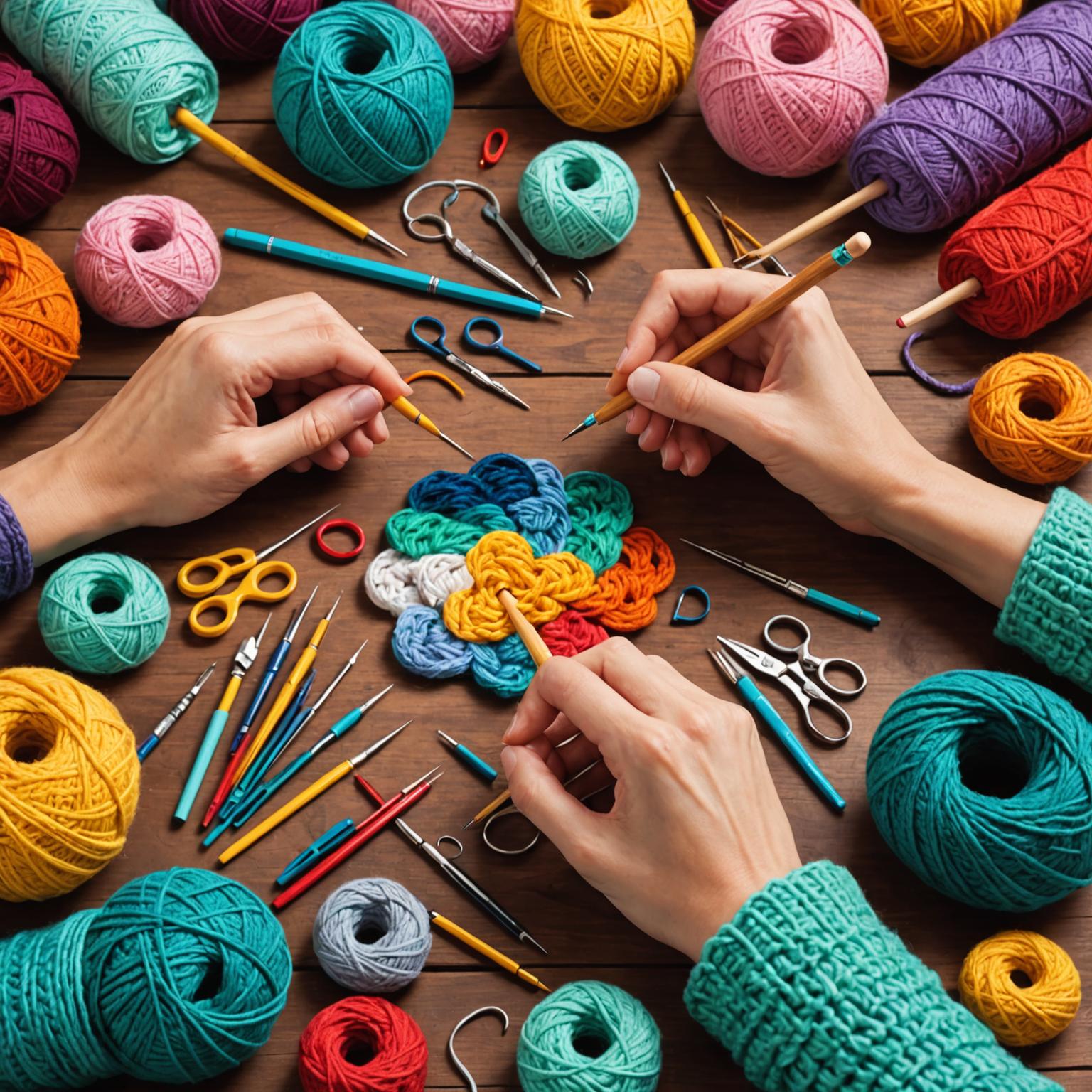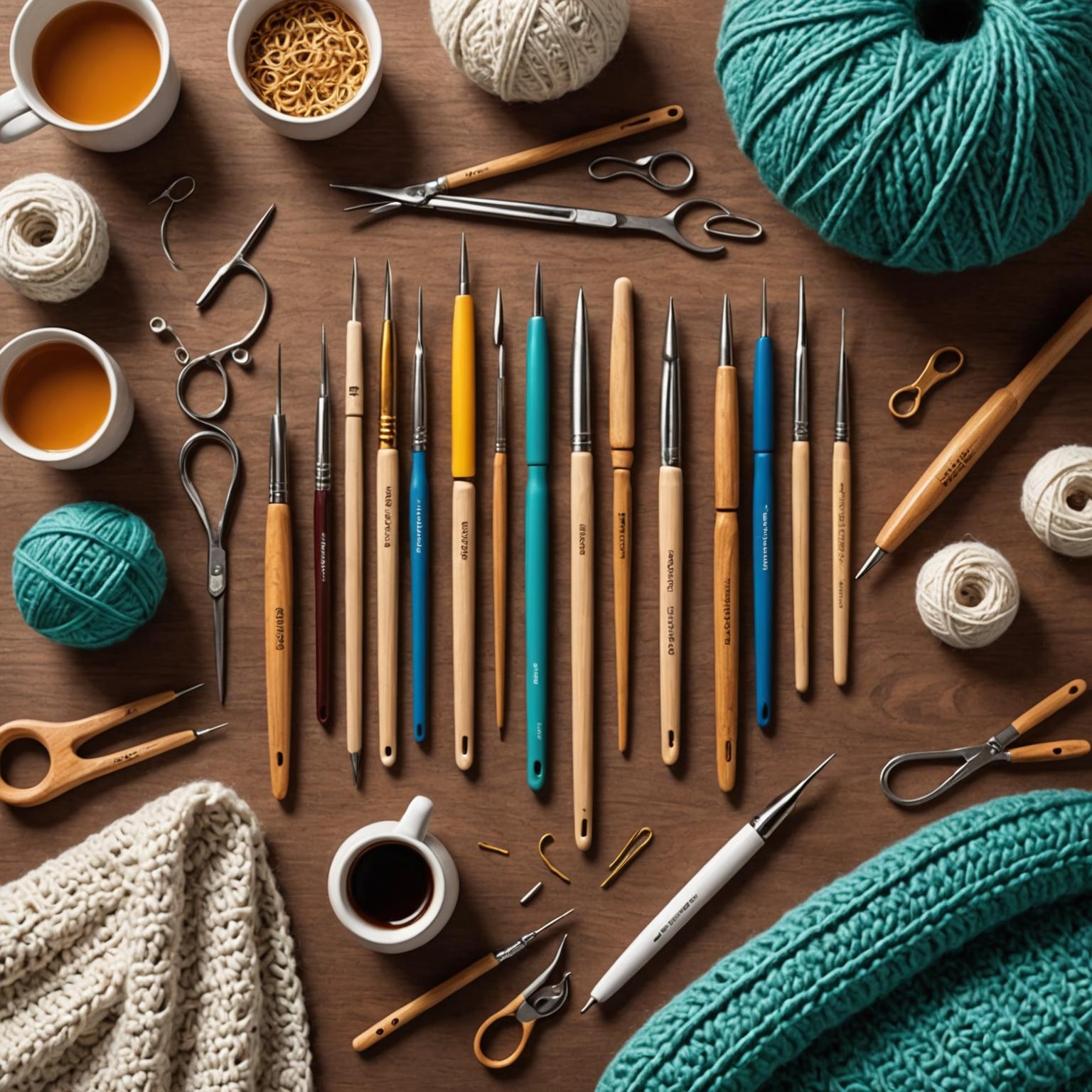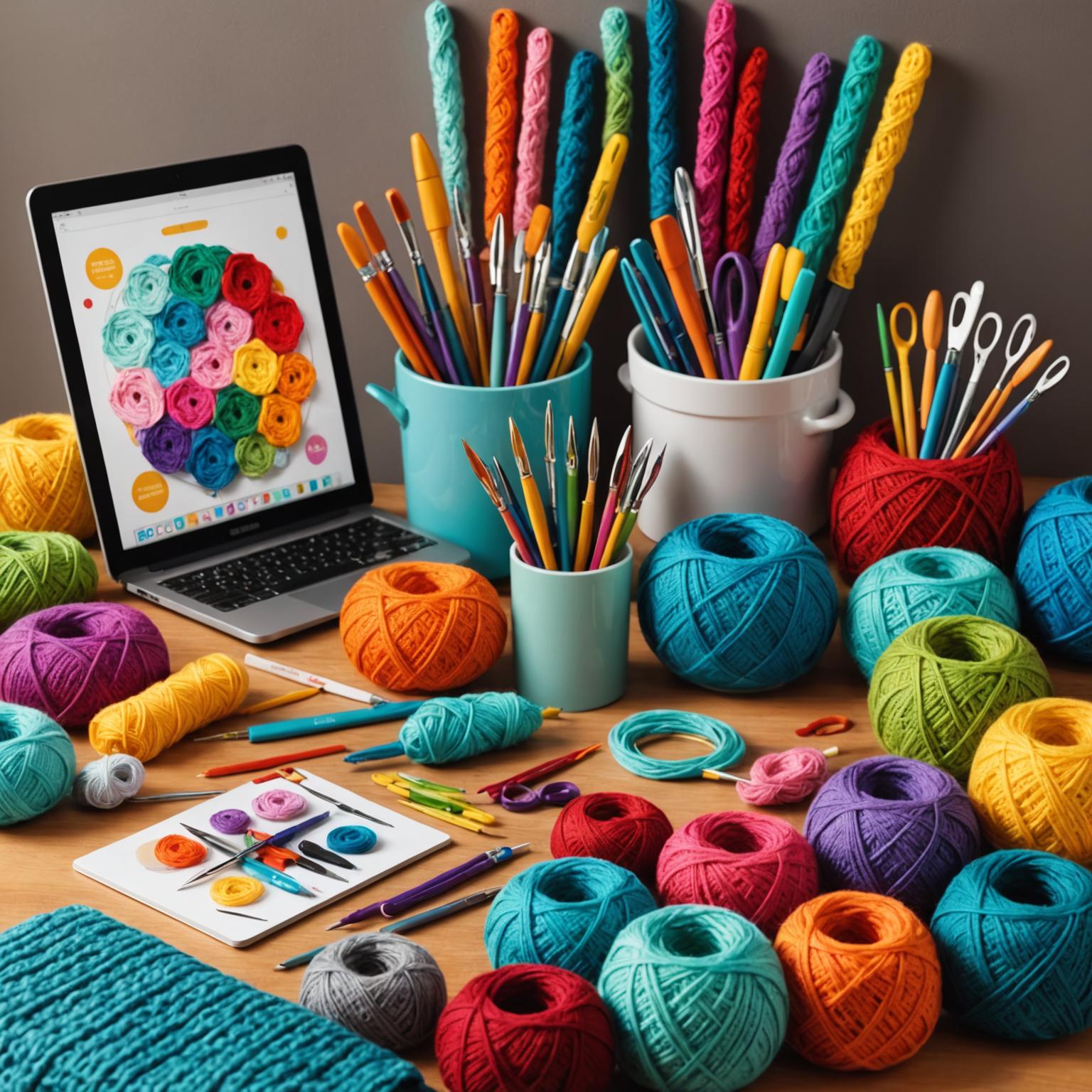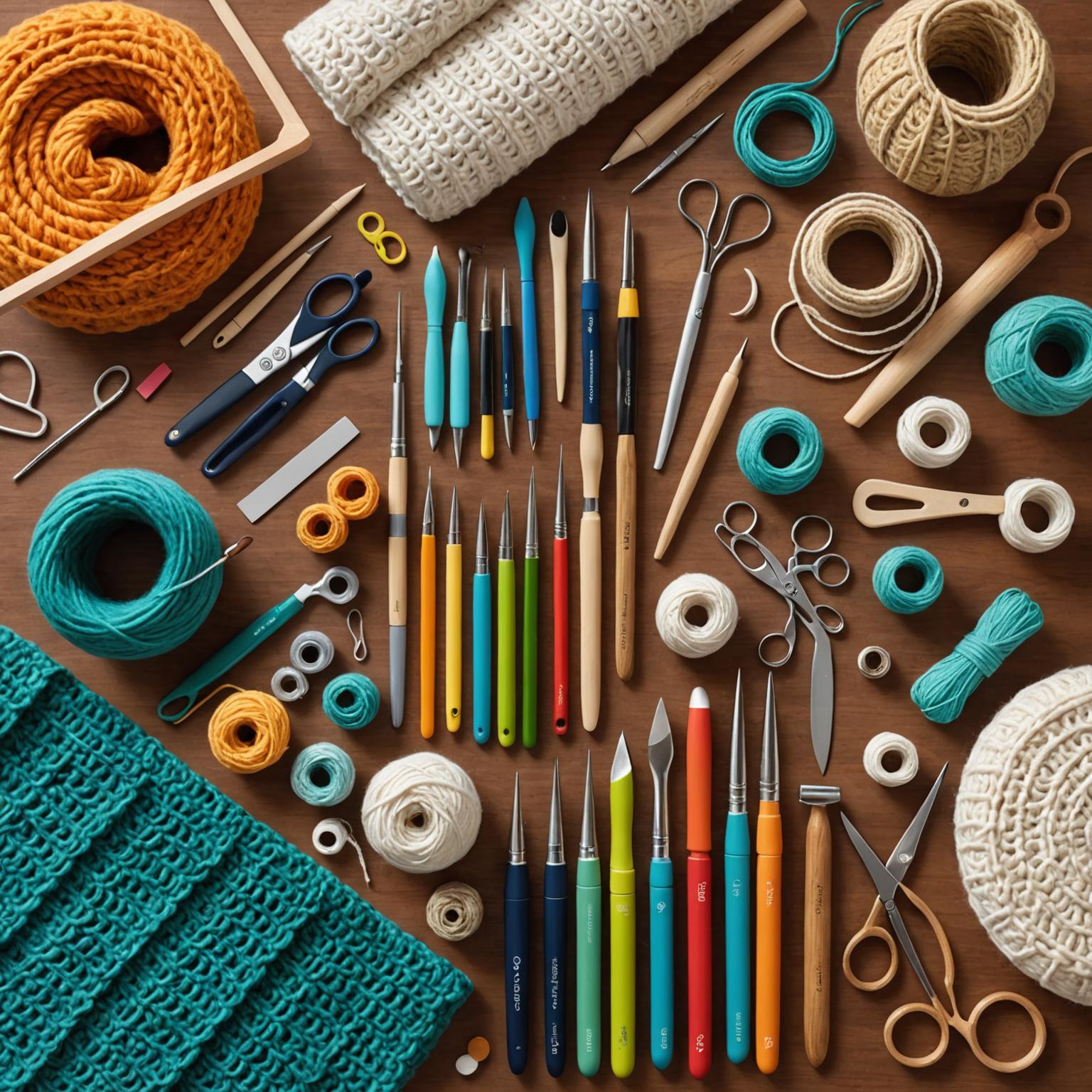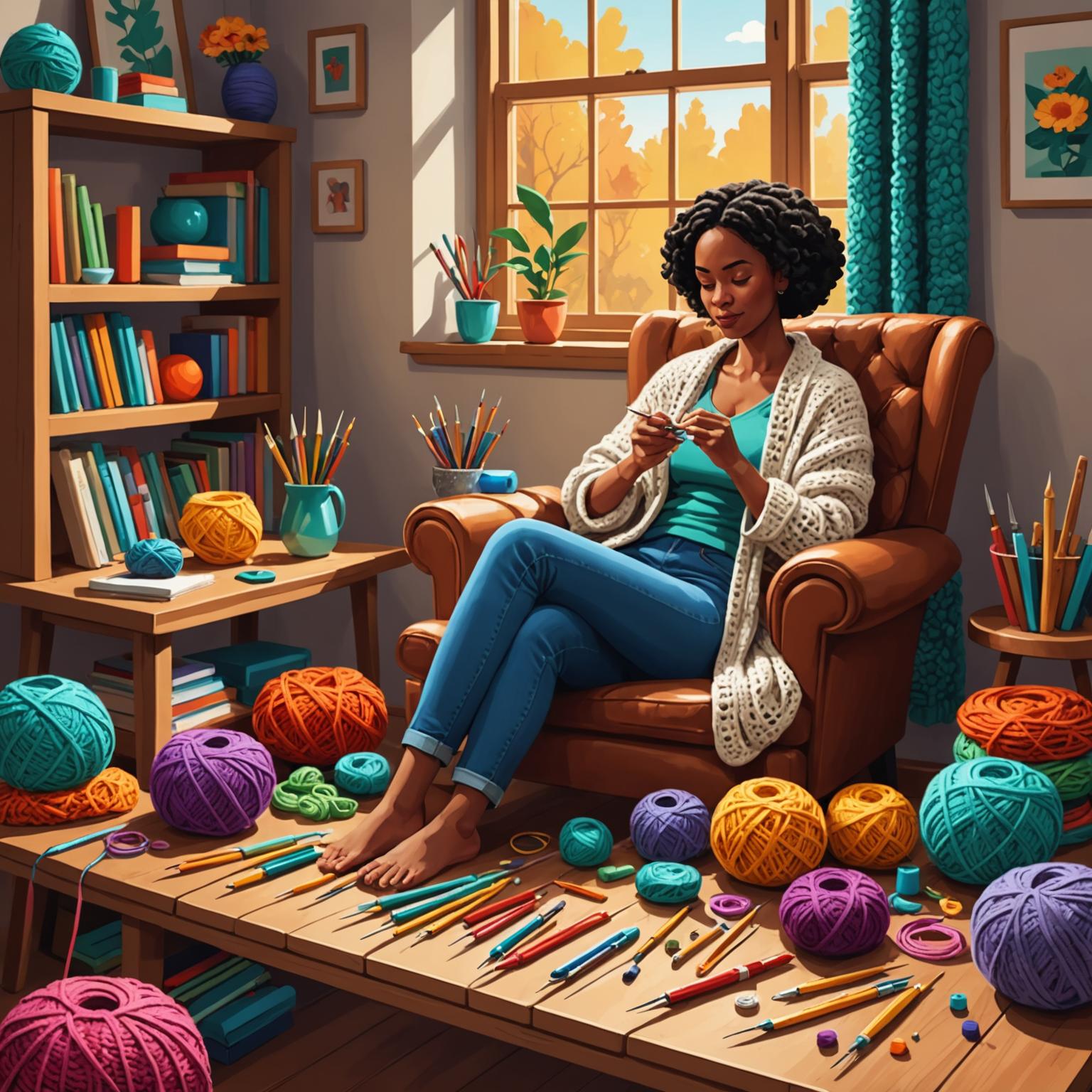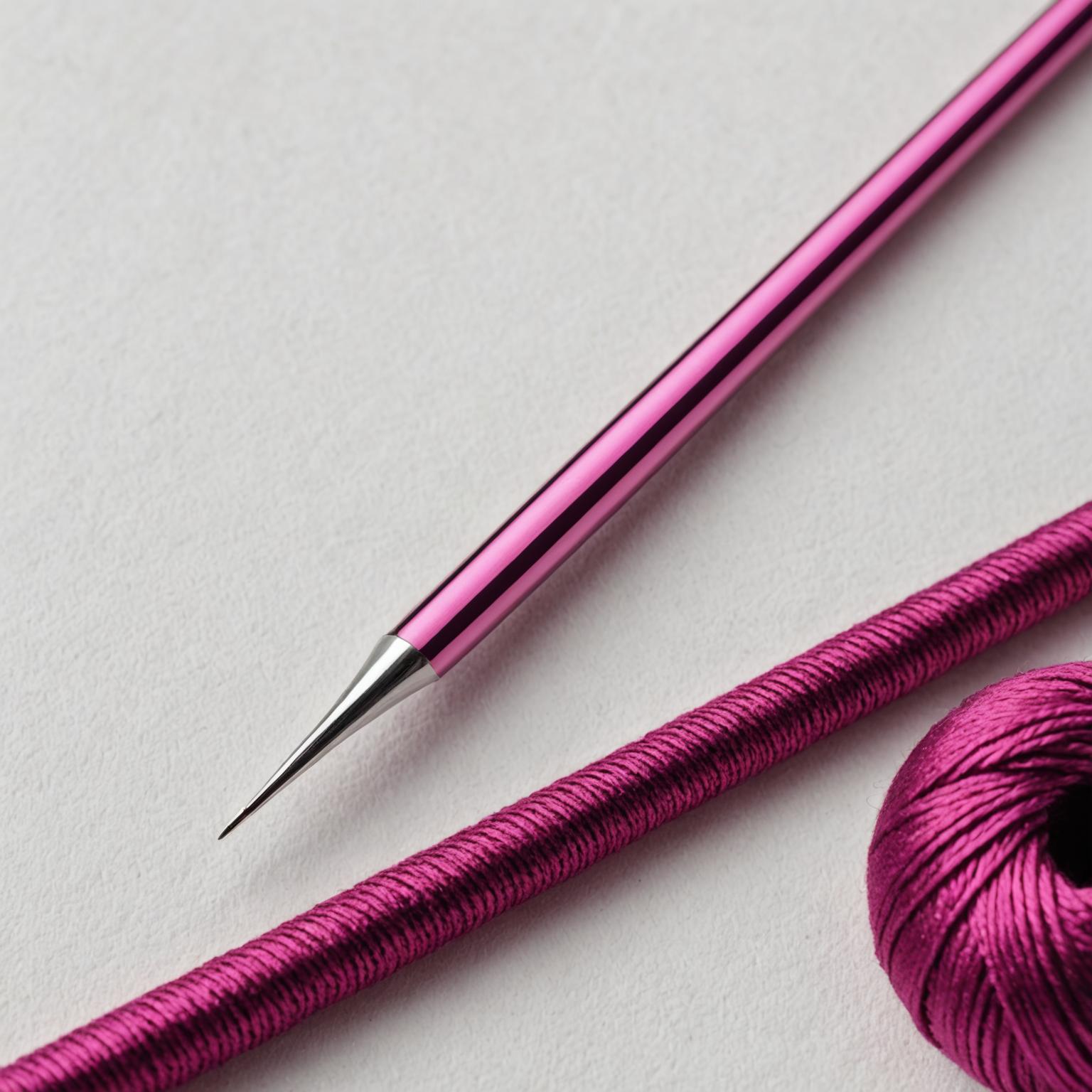
The Comfort Revolution: Understanding Ergonomic Crochet Hooks
For anyone who spends hours with yarn and hook, comfort is paramount. This is where ergonomic crochet hooks have revolutionized the crafting world. Unlike traditional, uniform aluminum hooks, ergonomic models are designed with the human hand in mind. They feature built-up, cushioned, or specially shaped handles that fit more naturally into your palm, reducing the stress and strain on your fingers, wrist, and forearm. These handles are often made from soft-grip silicone, warm and smooth polished wood, or lightweight molded resin. The primary benefit is a significant reduction in hand fatigue, allowing for longer, more comfortable crochet sessions. For crafters who suffer from conditions like arthritis, carpal tunnel syndrome, or repetitive strain injury, these hooks are not just a luxury but a necessity, enabling them to continue the craft they love without pain. By providing better leverage and requiring a less tense grip, ergonomic tools promote healthier crafting habits for everyone, ensuring your focus remains on your beautiful creation, not on aching hands.
Decoding the Numbers: A Guide to Crochet Hook Sizes
Navigating the world of crochet hook sizes can feel confusing at first, as different regions use different systems. The three primary systems you'll encounter are US sizes, which use a combination of letters and numbers (e.g., G/6); UK sizes, which use descending numbers (a UK 7 is smaller than a UK 2); and the metric system, which measures the shaft's diameter in millimeters (e.g., 4.0mm). The metric measurement is the most accurate and universal standard, and it's always wise to rely on it when in doubt. The size of your hook is critically important as it directly determines the size of your stitches. A larger hook will create larger, looser stitches with more drape, while a smaller hook will produce smaller, tighter, and denser stitches. Your yarn label is your best starting point, as it will almost always recommend a specific hook size. However, to ensure your project dimensions match the pattern, creating a gauge swatch is essential. Crocheting a small square and measuring your stitches per inch allows you to adjust your hook size as needed, guaranteeing that your finished garment or blanket turns out just right.
Material Matters: Choosing Your Hook's Composition
A crochet hook's material influences everything from how the yarn glides to how the tool feels in your hand. Aluminum is perhaps the most common material; it's affordable, durable, and has a slick surface that allows most yarns to slide effortlessly. For delicate projects using fine thread, such as lace or doilies, steel hooks are the standard, offering the necessary strength and precision in tiny sizes. For those who prefer a more natural feel, bamboo and wood hooks are an excellent choice. They are lightweight, warm to the touch, and provide a bit more grip, which is ideal for working with slippery fibers like silk or bamboo yarn. On the other end of the spectrum, plastic and acrylic hooks are inexpensive and come in a vast array of colors and jumbo sizes, perfect for projects using chunky or novelty yarns. Each material offers a unique tactile experience, and many crocheters find they prefer different materials for different types of yarn. Experimenting is key to discovering which composition works best for your personal style and tension.
Innovation in Your Hands: The Rise of Multifunctional Tools
As crafting evolves, so do the tools of the trade. The modern market is filled with innovative designs that offer enhanced functionality and versatility. A perfect example of this creative engineering is the Addi Duett, a tool that brilliantly merges two crafts into one. This unique instrument features a standard knitting needle point on one end and a crochet hook on the other. Fashioned in a stunning magenta hue, it's as stylish as it is practical. This dual-purpose design is incredibly useful for a variety of tasks. Knitters can use the crochet end to effortlessly pick up dropped stitches or to add beautiful crochet edgings to their finished pieces. It's also an excellent tool for specific techniques like Tunisian crochet. Crafted from high-quality, lightweight materials, the Addi Duett is designed for comfort during extended use, providing a smooth and reliable experience. It represents a new wave of crafting tools that prioritize not only quality and performance but also clever, multifaceted design, making it a valuable addition to any serious artisan's collection.
Finding Your Perfect Match: How to Select the Right Hook for You
Ultimately, the journey to find the best crochet hooks is a deeply personal one. With so many variables, the perfect hook for one person may not be right for another. To find your ideal match, consider a few key factors. First, think about your grip style—do you hold your hook like a pencil or more like a knife? Certain handle shapes are better suited to one grip over the other. Second, consider your typical projects and yarn choices. A smooth metal hook might be best for a grippy cotton yarn, while a wooden hook might give you better control over a slippery silk blend. The most important factor, however, is your own comfort. If possible, try out single hooks from different brands or material types before committing to a full set. Pay attention to how the hook feels in your hand, how the yarn glides over it, and whether it causes any strain. Your hook is the most-used tool in your collection, and finding one that feels like a natural extension of your own hand will bring more joy and ease to every stitch you make.
Conclusion: Your Creative Partner
Choosing a crochet hook is about more than just picking a size and material; it's about selecting a partner for your creative endeavors. From the thoughtful design of ergonomic crochet hooks that prioritize your well-being to the precise engineering of specific crochet hook sizes that ensure project success, every detail matters. The material can dictate your rhythm and flow, while innovative tools can open up new possibilities. As you continue to grow in your craft, don't be afraid to explore and experiment. Build a collection of tools that you truly love to use, tools that feel comfortable, reliable, and inspiring. Investing in high-quality hooks is an investment in your craft, your comfort, and your creativity, ensuring that every loop and stitch is a moment of pure enjoyment.

